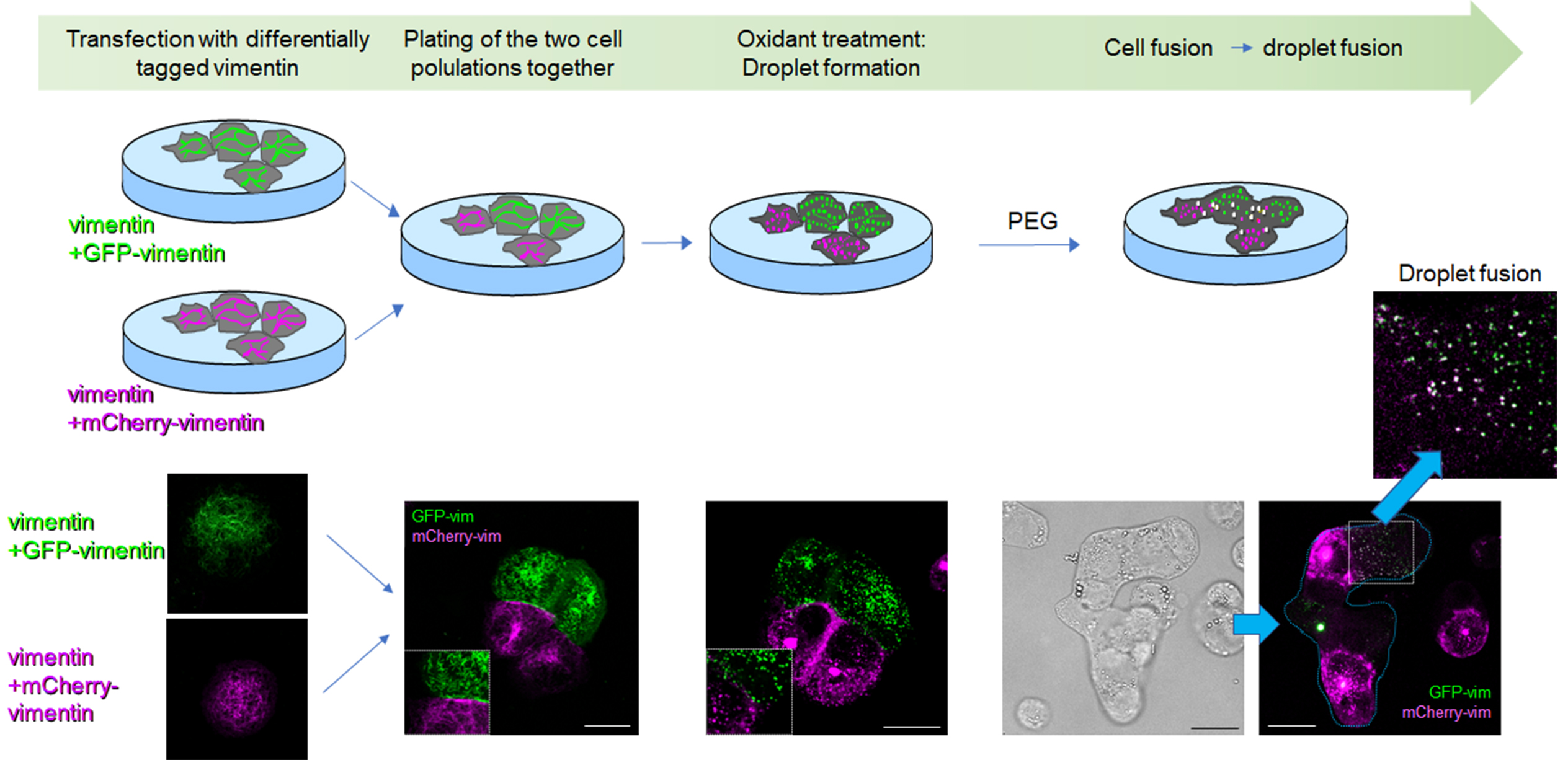
A study published in the journal Redox Biology by the group led by Dr. Dolores Pérez-Sala at Centro de Investigaciones Biológicas Margarita Salas (CSIC) has demonstrated that oxidation of the intermediate filament protein vimentin promotes remodeling of its filaments into biomolecular condensate-like structures in a reversible manner, additionally providing evidence of its regulated phase separation.
Vimentin filaments afford mechanical protection for cells, contribute to organelle position and homeostasis, and integrate cytoskeletal interplay. In pathology, vimentin is a key player in tumorigenesis, fibrosis, and infection. Vimentin filaments are highly versatile and undergo drastic and morphologically diverse reorganizations in response to stress, behaving as redox sensors.
Previously, the CIB group observed that strong oxidants elicited the full conversion of cellular vimentin filaments into small particles. In the current work, Martínez-Cenalmor et al. report that this process is rapid and fully reversible since vimentin particles can reconnect and reassemble the filament network when stress is over, meaning they contain functional vimentin units. Interestingly, these vimentin droplets behave as biomolecular condensates capable of exchanging material with the surroundings and fuse.
The observed properties depend on interactions among the N-terminal low-complexity sequence domains from several vimentin monomers within droplets, and strikingly, on the presence of the single cysteine residue of the protein. Since vimentin droplets are more susceptible than full filaments to dissolution by certain chemicals, these observations could also be useful for vimentin drug targeting strategies.
Altogether, this study provides insights into the intriguing ability of vimentin filaments to rapidly remodel into a wide array of structures responding to diverse stimuli and cellular stress conditions. The work raises the hypothesis that filament-to-droplet transition protects against irreversible damage of the vimentin network by oxidative stress and opens new avenues for drug discovery.
Reference: Oxidative stress elicits the remodeling of vimentin filaments into biomolecular condensates. Martínez-Cenalmor P, Martínez AE, Moneo-Corcuera D, González-Jiménez P, Pérez-Sala D (2024) Redox Biol. 75:103282. doi: 10.1016/j.redox.2024.103282

